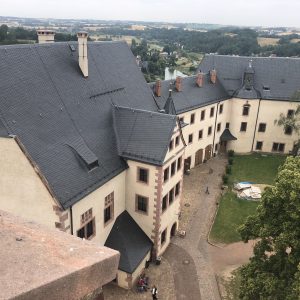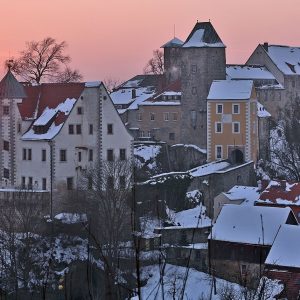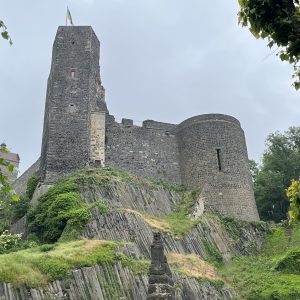The Wartburg, situated majestically above the city of Eisenach in the Thuringian Forest, is one of the most significant castles in Germany and stands as a symbol of courage and resistance.
The impressive fortress was built in 1067 in the Romanesque style. Originally designed as a protective castle to defend the region against potential invaders, it was initiated by Thuringian Count Ludwig the Springer. The renowned master builder of that time, Hermann I. von Sangerhausen, likely had a significant influence on the construction work.
The history of the Wartburg is rich with significant moments. During the Peasants’ War in the 16th century, it withstood sieges, and during the Thirty Years’ War, it endured repeated captures and considerable damage. In the 19th century, it became an inspiration for Johann Wolfgang von Goethe. However, one of its most notable residents was the reformer Martin Luther, who translated the New Testament into the German language here in 1521.
Architecturally, the Wartburg impresses with its versatility: from the Palas, a jewel of Romanesque architecture with its magnificent rooms, to the atmospheric castle chapel and the historic Knights’ House. Serving as a living testament to German history, the castle now functions as a museum. A highlight for visitors is the Luther Room, which served as Martin Luther’s workspace and living quarters.
The outstanding cultural and historical significance of the Wartburg was recognized in 1994 when it was designated as a UNESCO World Heritage Site. Thus, it is not only an essential part of German history but also a globally recognized symbol of freedom and resistance.
The exact address is:
Wartburg
Auf der Wartburg 1
99817 Eisenach
Thuringia, Germany
The GPS coordinates are:
Latitude: 50.9671378
Longitude: 10.303756
You can find the website at:
https://www.wartburg.de/
Photo: Moritz Grenke
License: CC BY-SA 3.0





Reviews
There are no reviews yet.